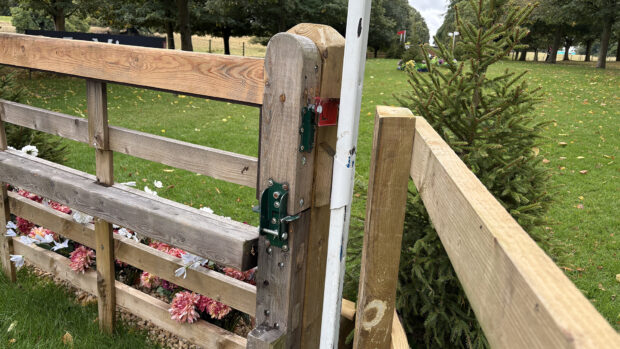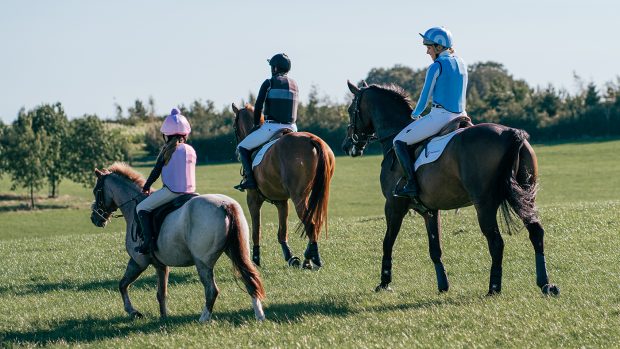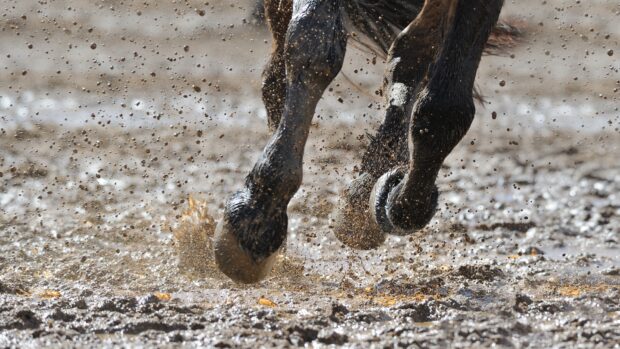International coach William Micklem offers advice on teaching your horse to have a "fifth leg" going cross-country — in an effort to make your round safer
If you want to jump safely, the fundamental aim in training should be to develop your horse’s ability to look after himself. If your horse looks at what he is jumping, makes automatic alterations, has quick reactions when getting too close or far away from a fence, or when slipping or tripping, he can be said to have a “fifth leg”. All horses should have a fifth-leg training programme as part of their preparation, especially for cross-country.
Fifth-leg training is about teaching the horse to use his brain and take responsibility for the jumping and is a vital part of your safety. It is the one area that is frequently neglected in the training of event horses. The pay-off is that training in this way will allow room for error.
1. Self-carriage
Allow your horse to be in self-carriage. Train over grids frequently, using little or no contact and a variety of obstacles and terrain at slow speeds. Do not try to support your horse through the reins because this only restricts the use of the head and neck and encourages your horse to take more weight forward as he tries to lean on the contact. The reins should always be used as a communication point, not an attempt at a support point.
2. Turn-out terrain
As far as possible, even just for his holidays, turn your horse out on hillsides and in fields with varied terrain so that he gets used to going up and down hills. This is especially important for a young horse. Try and buy a horse that has had this experience and avoid those that have only experienced a flat arena and minimal turnout. Watching horses gallop freely and nimbly over undulating fields should also encourage any riders to trust their horses to look after themselves and whoever is on top.
3. Riding terrain
When hacking, deliberately walk, trot, and canter up and down banks and over undulating ground. You may not live in the country or in an area suitable for hacking, but this is of such benefit to your horse that you should consider transporting him to somewhere with good hacking on a frequent basis, so that he learns to become more agile.
4. Loose-schooling
With the help of a coach, practise loose-schooling your horse — without a rider or tack — over fences. This will teach the horse to make decisions about how to respond to exercises without relying on his rider to guide him. This is not easy to do without the right facilities, so get together with some friends, hire the right facility and loose-school a number of horses on the same day.
Continued below…

48 cross-country schooling venues you need to check out
5. Minimal interference
During jumping training, make sure you interfere with the horse’s jump as little as possible. It is difficult to sit still and make only the smallest of changes as you ride. But, if you can, it will greatly benefit your horse’s fifth-leg training because he is being allowed to take more responsibility for the effort needed and for making small changes to the take-off point.
6. ‘Watch’ exercises
Put logs or sleepers in front of every stable door, between fields and along riding tracks. In this way, your horse will have to practise watching where he is going, where he puts his feet and developing his coordination. This is particularly important for young horses.
7. Banks and water
Build solid, wide banks around your yard, along the side of the drive and between paddocks suitable for jumping at a slow speed on a regular basis. Then, using small solid sides, permanently fill a natural dip, in or near the yard, with water (including channels for drainage) and then ride through it daily. This might be en route to your riding arena.
8. Varying jump distances
During training, start with standard jumping distances, but then slightly shorten and lengthen them. A standard showjumping stride length is 3.7m (12ft). Gradually you can train your horse to cope with a 3m (10ft) or a 4.2m (14ft) stride length, with no increase or decrease of weight in the rein. This process may take many months to achieve but the results will be worth it.
9. Leaving the standard arena
Try doing your dressage training on varied ground occasionally. It is useful if part of your schooling area has a small incline, so that you can practise maintaining controlled impulsion as you go up and down a slope. As well as the benefits for fifth-leg training, this has considerable advantages for the physical development of your horse.
10. ‘Hunting’ over fences
Make all small, 50-75cm (20-30in), schooling fences as solid as possible so your horse treats them with respect. With the guidance of your coach, jump them not only on straight lines, but off turns and at angles. Gradually use varied terrain and distances between fences. Do this with the minimum of interference. Do not worry if the horse hits a fence — this will help him develop a safe jumping technique. Your coach can guide you about doing the same thing over slightly bigger fences, however do not school over big, solid fences at home for reasons of safety and maintaining the horse’s confidence.



